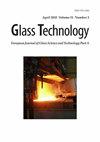保护历史彩色玻璃
IF 0.3
4区 材料科学
Q4 MATERIALS SCIENCE, CERAMICS
Glass Technology-European Journal of Glass Science and Technology Part a
Pub Date : 2020-11-01
DOI:10.13036/17533546.61.5.strobl
引用次数: 0
摘要
近几十年来,人们对彩色玻璃窗的变质过程,更确切地说,是其组成玻璃、铅和油漆颜料的变质过程进行了彻底的研究,现在已经很好地理解了。因此,保护的必要性,特别是中世纪的钾肥玻璃,被广泛接受,但不是实现这一目标的手段。早期的尝试,如涂在玻璃上的涂层或夹心工艺,被称为雅可比工艺,都因各种原因而失败,并带来了灾难性的后果。除了将窗户移到安全的存储空间之外,目前唯一可用的应对措施是在现场以引入等温玻璃系统的形式创建一个类似博物馆的环境。尽管其无可置疑的优点,等温玻璃系统仍然存在争议,主要是因为它干扰了给定的历史背景。我们将讨论各种等温玻璃的设计,所有这些设计都旨在最大限度地减少它们对建筑的物理和视觉影响,从而有力地支持这一重要的保护措施。本文章由计算机程序翻译,如有差异,请以英文原文为准。
Protection of historic stained glass
The process of deterioration of a stained glass window, more precisely of its component glass, lead and paint pigments, has in recent decades been researched thoroughly and is now well understood. The need for the protection in particular of the potash window glasses of the middle ages therefore is widely accepted but not the means of how to achieve this aim. Early attempts such as coatings applied on the glass or the sandwich process, known as Jacobi–Process, have failed for a variety of reasons and with disastrous consequences. Short of removing the windows to safe storage, the only response currently available is the creation of a museum like condition on site in the form of the introduction of an isothermal glazing system. Despite its unquestioned merits, the isothermal glazing system is still in dispute mainly because of its interference with a given historic setting. A variety of designs for the isothermal glazing will be discussed, all aimed at minimising their physical and visual impact on the building, making a strong case in favour of this important protective measure.
求助全文
通过发布文献求助,成功后即可免费获取论文全文。
去求助
来源期刊
CiteScore
0.30
自引率
0.00%
发文量
0
审稿时长
>12 weeks
期刊介绍:
The Journal of the Society of Glass Technology was published between 1917 and 1959. There were four or six issues per year depending on economic circumstances of the Society and the country. Each issue contains Proceedings, Transactions, Abstracts, News and Reviews, and Advertisements, all thesesections were numbered separately. The bound volumes collected these pages into separate sections, dropping the adverts. There is a list of Council members and Officers of the Society and earlier volumes also had lists of personal and company members.
JSGT was divided into Part A Glass Technology and Part B Physics and Chemistry of Glasses in 1960.

 求助内容:
求助内容: 应助结果提醒方式:
应助结果提醒方式:


